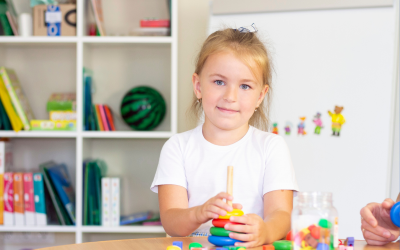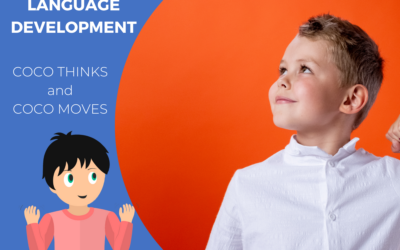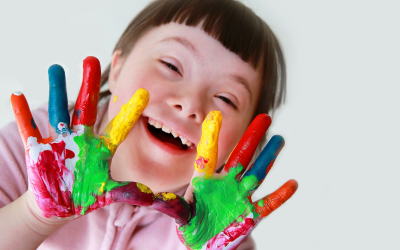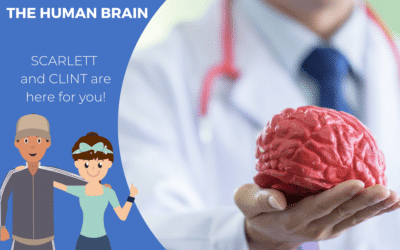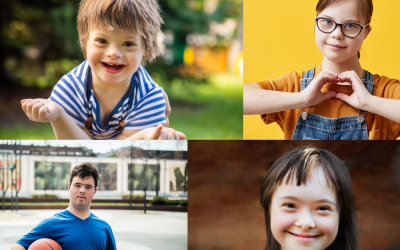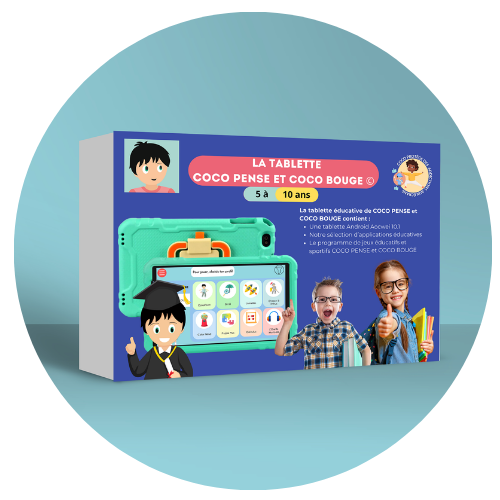Music therapy is an approach increasingly used to help autistic children develop their social, emotional and cognitive skills. In this article, we explore the many benefits of music therapy for children with autism spectrum disorders (ASD). From communication and emotional regulation to the development of social skills, music offers a fertile breeding ground for autistic children. Discover how music therapy can be a powerful tool to help them develop and improve their quality of life.
Autism is a neurodevelopmental disorder characterized by deficits in communication, social interaction and repetitive behavior. Children with autism may have difficulty expressing themselves verbally, understanding the emotions of others and interacting socially. Music therapy offers a unique and effective way of tackling these challenges, using music as a therapeutic tool.
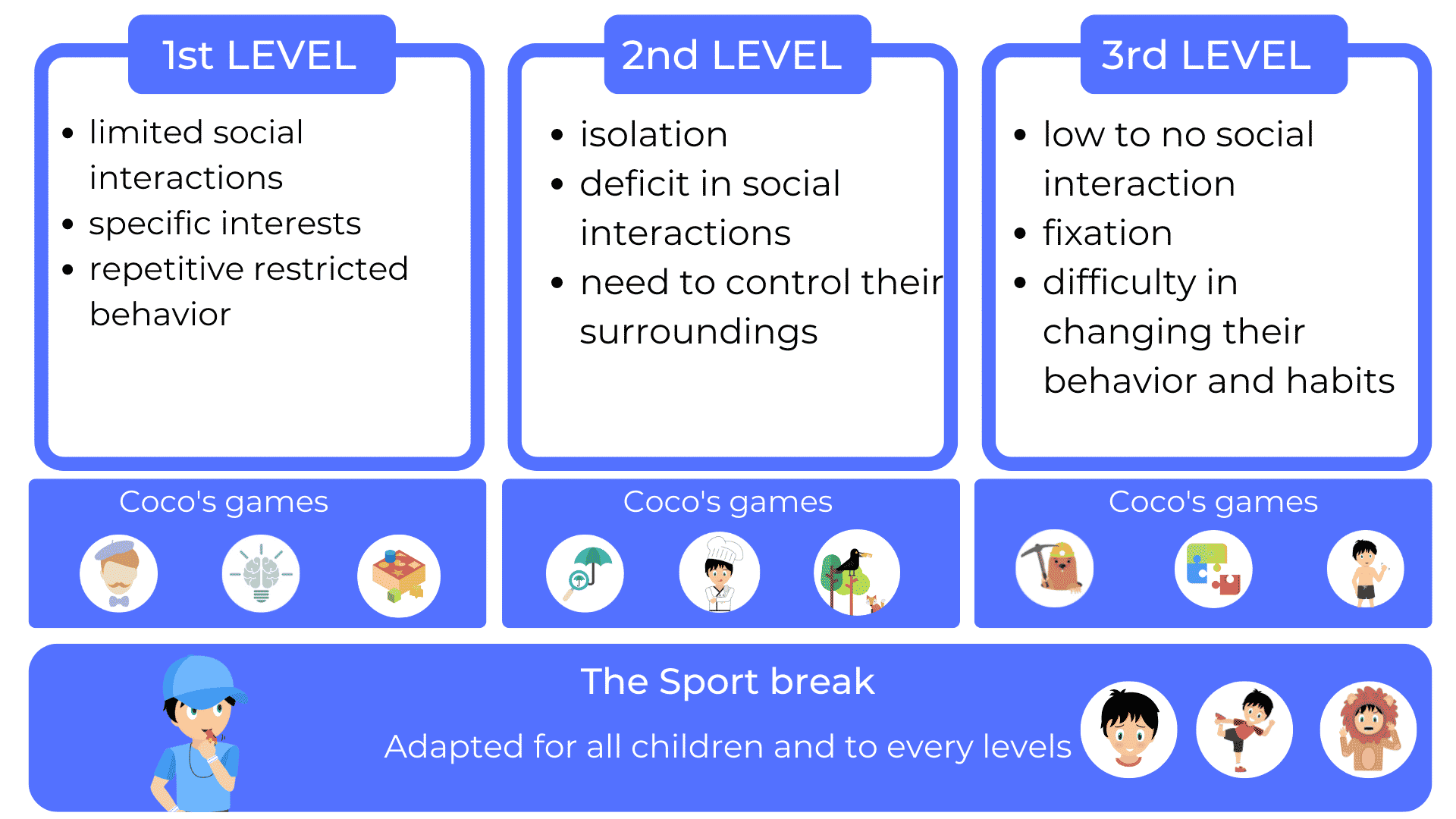
The foundations of music therapy
Music therapy is an approach that uses music and its elements (melody, rhythm, harmony) in a therapeutic context to achieve specific goals. For children with autism, music can provide a pleasant, structured sensory experience, facilitating their engagement and participation.
Music has several characteristics that make it a powerful therapeutic tool for autistic children:
1. Structuring and predictability
Music is organized and predictable, which can help autistic children develop a sense of security and comfort. Recurring elements such as musical motifs and regular rhythms provide a structure that can promote understanding and learning.
2. Non-verbal communication
Music enables a form of non-verbal communication that transcends language barriers. Children with autism can use music as a means of expression and communication, relying on musical elements to convey their emotions and thoughts.
3. Multisensory engagement
Music stimulates several senses at once, which can be particularly beneficial for autistic children who may have sensory differences. Children can experience music through listening, movement, touch and even sight, creating a stimulating and enriching multi-sensory experience.

The benefits of music therapy for autistic children
Music therapy offers a variety of benefits for autistic children. Here are some key areas where music can have a positive impact:
1. Communication and emotional expression
Music can help autistic children develop their communication and emotional expression skills. By using music as a means of non-verbal communication, children can express their emotions, share experiences and interact with others in a more fluid and rewarding way.
2. Social development
Music fosters social interaction by providing a common ground for engagement. Children with autism can take part in group musical activities, such as playing a musical instrument together or singing in a choir, which encourages collaboration, sharing and cooperation.
3. Emotional regulation
Music has the power to influence a person’s emotional state. For autistic children who may have difficulty regulating their emotions, music can serve as a channel for emotional regulation. Soothing rhythms or catchy melodies can help calm anxiety, reduce stress and promote relaxation.
4. Cognitive development
Music therapy also stimulates the cognitive development of autistic children. Music engages different regions of the brain, which can enhance cognitive skills such as memory, attention, concentration and problem-solving. Musical activities, such as playing an instrument or learning songs, involve motor coordination, planning and decision-making.
5. Improved language and communication
Music can play an important role in improving language and communication in autistic children. Musical activities can foster the development of pre-linguistic skills such as sound imitation, vocalizations and gestures. Memorizing song lyrics and practicing pronunciation can also help improve verbal language.

6. Motivation and commitment
Music has an intrinsically motivating and engaging quality. For children with autism, who may have difficulty staying motivated and engaged in activities, music can be a powerful stimulant. Playful, interactive musical activities capture their interest and keep them engaged, promoting learning and development.
7. Improved self-esteem
Success in musical activities can boost the self-esteem of autistic children. Music offers opportunities for fulfillment, responsibility and self-expression. Progress in playing an instrument or learning new musical skills can boost self-confidence and self-esteem.
8. Social integration
Music therapy can also promote the social integration of autistic children. Music is a universal language that transcends social barriers and facilitates social interaction. Group musical activities, such as playing in an orchestra or singing in a choir, offer autistic children opportunities to connect with their peers, develop collaborative skills and strengthen their sense of belonging to a group.
9. Stress and anxiety management
Music has the power to calm the mind and reduce stress and anxiety. For autistic children who may be sensitive to sensory stimuli and have difficulty regulating their emotions, music can serve as a relaxation and stress management mechanism. Soothing melodies, regular rhythms and structured musical activities can help create a secure, calming environment.
10. Improving motor skills
Playing musical instruments and the rhythmic movements of dance or percussion can improve the motor skills of autistic children. The coordination of hands, fingers and feet needed to play an instrument or take part in dance activities stimulates the development of fine and gross motor skills. This can have a positive impact on their ability to perform daily tasks and engage in physical activities.

11. Adaptability and flexibility
Music offers a flexible and adaptable learning environment, making it an ideal approach for autistic children who may have specific needs and different learning styles. Musical activities can be adapted to suit individual abilities, enabling children to progress at their own pace and develop confidence in their own skills.
12. Pleasure and fulfillment
Finally, music therapy brings pleasure and fulfillment to autistic children. Music is a source of joy and positive emotions, and musical activities help children express themselves, have fun and feel good. Music offers a creative and playful way to explore the world, develop talents and find pleasure in moments shared with others.
Music therapy offers many benefits for children with autism, promoting communication, social development, emotional regulation, cognitive development and self-esteem. Music creates a safe, stimulating environment where children can flourish and develop their skills. By incorporating music therapy into speech therapy programs, we can optimize results and improve the quality of life of autistic children.
In conclusion, music therapy is a powerful and effective approach to stimulating memory and promoting the overall development of children with autism. Music-based play activities provide an engaging and rewarding framework for building cognitive, social and emotional skills. By integrating music into speech therapy, we can open up new possibilities for growth and learning for these extraordinary children.
COCO THINKS and COCO MOVES, educational and sports games
Today, COCO is an application used by autistic children either at home or with a healthcare professional, who may be a speech therapist, occupational therapist, psychologist or psychomotor therapist. All professionals wishing to subscribe to Coco can benefit from a web-based performance tracking platform. It is therefore possible to see the evolution and improvement of people with autism, and thus personalize their care.
Coco goes everywhere with you, because the application doesn’t need Wi-Fi to work, only for updates.
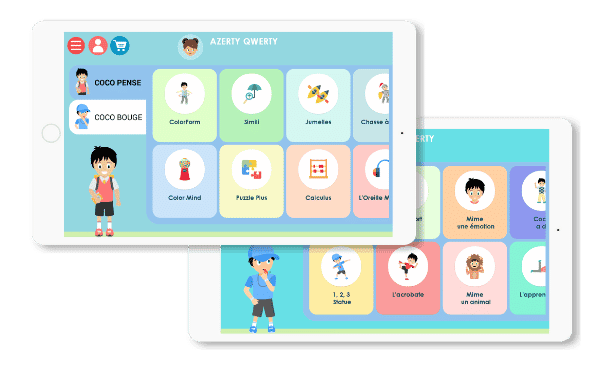
SPORTS BREAKS BENEFIT AUTISTIC CHILDREN
In COCO THINKS and COCO MOVES, you’ll also find physical activities. Every 15 minutes of screen time, the application stops and offers children physical games.
This sports break has many advantages for children, especially those with autism.
Screen use is very useful and loved by children, but prolonged use can become negative. With Coco, children can take a dynamic break, learning to let go of the tablet and engage in physical activity while having fun at the same time.
All our physical activities are designed with children in mind. With balance and dance games, children learn to know their bodies and adapt to their environment. For children with autism, this can be very useful for augmenting known motor patterns and for gaining a better sense of self (especially when there is hypo or hypersensitivity).
In Coco, there’s also the “mime an emotion” game, where the child has to reproduce the emotion shown on screen by Coco. Children can first learn to name emotions, to recognize them in themselves and then in others. What’s more, there’s an audio description in the game that explains the emotion and what you feel in your body.
In our educational application COCO, you can also learn to recognize your emotions with the game “Mime emotions”, in the COCO MOVES section. By clicking on the question mark, you will be able to learn the different emotions in order to better recognize them.
This game to mime emotions is also accessible as a break, every 15 minutes of screen. Every 15 minutes, children are asked to choose a physical activity for an active break. And you can also mime the emotions at that time!
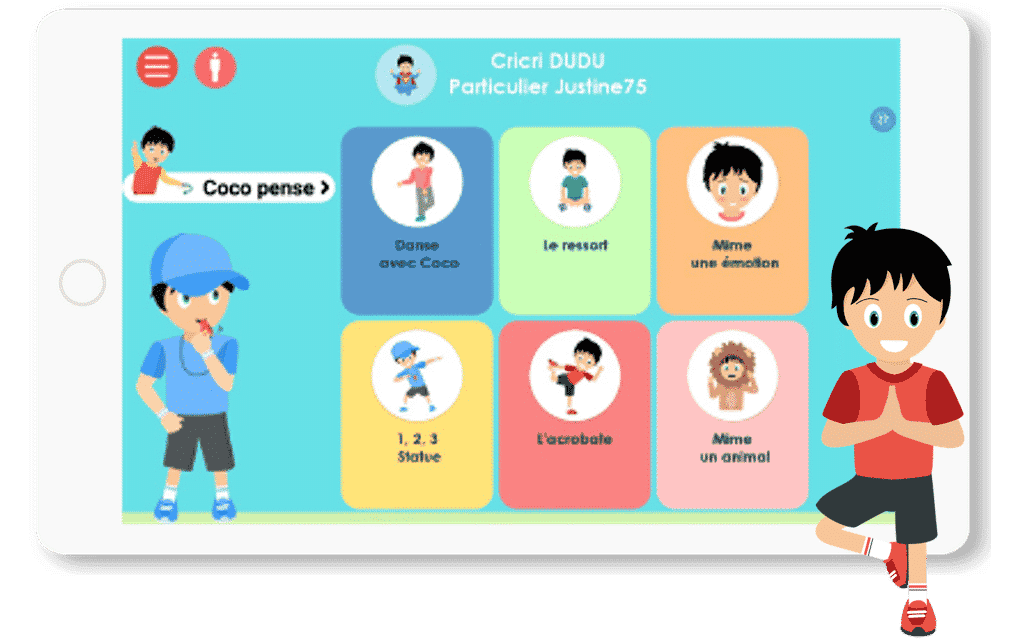
In our educational application COCO, you can also learn to recognize your emotions with the game “Mime emotions”, in the COCO MOVES section. By clicking on the question mark, you will be able to learn the different emotions in order to better recognize them.
This game to mime emotions is also accessible as a break, every 15 minutes of screen. Every 15 minutes, children are asked to choose a physical activity for an active break. And you can also mime the emotions at that time!


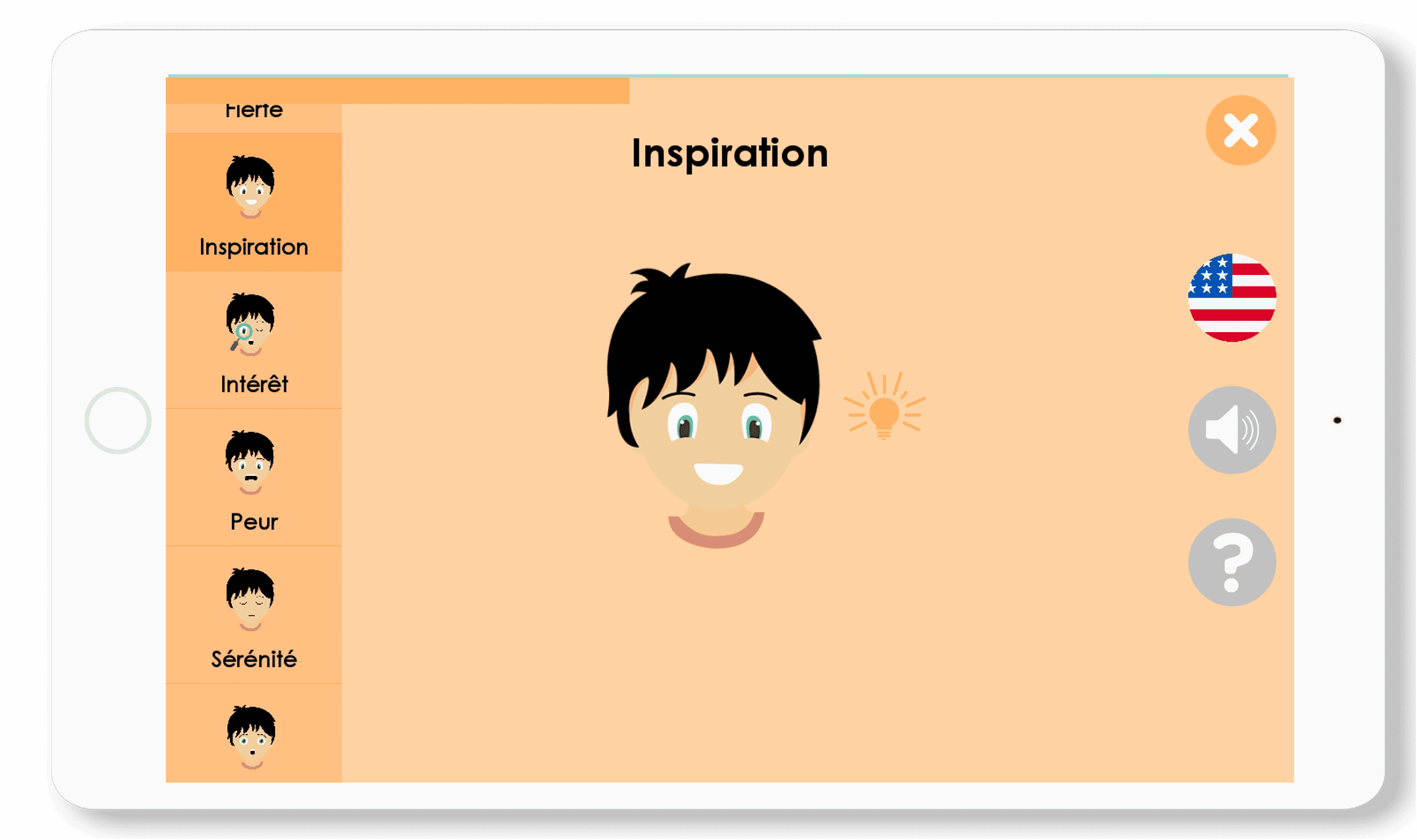
THE SURPRISE
Surprise means that you are surprised by a moment, a person or an object. Like an unexpected gift!
When you are surprised, you open your mouth and eyes wide.
THE CONFUSION
Confusion is being lost in our ideas because of an event for example. It is possible to make a mistake about the name of someone or something.
To mimic confusion, open your eyes wide, make a big “Hoo” with your mouth and raise your eyebrows.
INSPIRATION
Inspiration is the ability of our mind to imagine and create things like drawings, poems, stories.
For inspiration, we’ll squint our eyes, scratch our heads lightly with a smile and pretend to paint, write or draw.



THE AFFECTION
Affection means to be touched, to have positive thoughts for a friend, family member or pet.
Here, we smile, we think about the good times, we can hug, kiss, tell a friend that we like him or her.
.
THE BOREDOM
Boredom is present when we are in a situation that does not interest us. You don’t want to listen to the person in front of you or you don’t want to do anything.
For boredom, we’ll blow hard, look up and look around.
THE PAIN
Pain is an unpleasant sensation that can hurt. It can hurt physically with an accident. Pain can also be a feeling of missing someone or something or sadness.
To express the pain we raise the eyebrows upwards, we bend the eyes and we make a grimace with the face.
Other articles that might interest you:
Supporting children with autism
Dynseo proposesSUPPORTING CHILDREN WITH AUTISM with COCO THINKS AND COCO MOVESDynseo and its team are very much...
Supporting DYS children with COCO THINKS and COCO MOVES
Dynseo proposesDYS disorders with COCO THINKS and COCO MOVESOur educational and pedagogical games program COCO THINKS...
Language development
Children communicate from birth with movements, crying, looking at each other or with smiles. After only a few months,...
Supporting children with Down Syndrome with Coco
Dynseo proposesDOWN SYNDROME with COCODown syndrome is a non-hereditary chromosomal abnormality that leads to the...
Supporting people after a stroke
Dynseo proposesStroke with CLINT, your brain training coachThe Dynseo team is very involved in helping people who have...
Supporting someone with Alzheimer’s
In this guide, we will detail how SCARLETT can be used for supporting someone with Alzheimer's. SCARLETT is a...
10 myths about the human brain you didn’t know
The brain is an incredible muscle, however there are many things we do not know, and what we do know is not always...
Using Digital Tools to Support Students with Special Educational Needs
Special Educational Needs (SEN) encompass a wide range of learning difficulties and disabilities that can hinder a...
Down Syndrome and Communication: Facilitating Interaction with Visual and Interactive Supports
When we think about Down syndrome, we often recognize it as a genetic condition that affects physical and cognitive...
How to Track Progress in People with Down Syndrome Using Digital Tools
Down syndrome, a genetic condition caused by the presence of an extra chromosome 21, affects approximately 1 in every...



